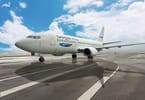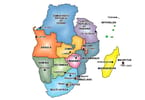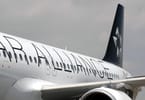WASHINGTON, DC – The US Department of Transportation’s Bureau of Transportation Statistics (BTS) reported today that US airlines’ systemwide (domestic and international) scheduled service load factor – a measure of the use of airline capacity – was 83.0 percent in January, unchanged from December, seasonally adjusted. Seasonal adjustment allows the comparing of monthly load factors to all other months.
The January 2015 load factor was below the all-time seasonally-adjusted high of 84.4 reached in January 2014. Load factor is a measure of the use of aircraft capacity that compares the system use, measured in Revenue Passenger-Miles (RPMs) as a proportion of system capacity, measured in Available Seat-Miles (ASMs).
RPMs and ASMs fell from December to January but because both declined by 0.7 percent, the load factor remained at 83.0.
U.S. Airline Trends:
Seasonally-adjusted
Since peaking in January and February 2014, load factors have ranged from a high of 83.7 in May to a low of 82.5 in November. Load factors have generally increased since the recession that ended in June 2009 because demand, measured in RPMs, has increased at a faster pace than capacity, measured in ASMs. In January, demand was at the second highest level, down from the all-time high set in December. The last 10 months, starting with April 2014 through January 2015 are the 10 all-time highest months for demand.
Capacity declined in January from December, the month with the highest all-time level, revised from last month’s release. The most recent three months are the only post-recession months among the overall top 10 for capacity, showing that after six years capacity has returned to pre-recession levels. Systemwide enplanements in January were the highest since the recession, and fourth highest all-time, spurred by a monthly record high for international enplanements. Domestic enplanements have been rising slowly but remain below pre-recession levels.
Unadjusted
Systemwide: Demand, measured in RPMs, reached an all-time high for the month of January. The number of passengers and capacity, measured in ASMs, while up from January 2014, remained below the all-time highs for the month of January set in 2008.
Domestic: Demand, measured in RPMs, reached an all-time high for the month of January. The number of passengers and capacity, while up from January 2014, remained below the all-time highs for the month of January set in 2008.
International: The number of passengers, demand and capacity all reached all-time highs for the month of January, exceeding the highs set in January 2014.
WHAT TO TAKE AWAY FROM THIS ARTICLE:
- Load factor is a measure of the use of aircraft capacity that compares the system use, measured in Revenue Passenger-Miles (RPMs) as a proportion of system capacity, measured in Available Seat-Miles (ASMs).
- The number of passengers and capacity, measured in ASMs, while up from January 2014, remained below the all-time highs for the month of January set in 2008.
- The number of passengers, demand and capacity all reached all-time highs for the month of January, exceeding the highs set in January 2014.






















